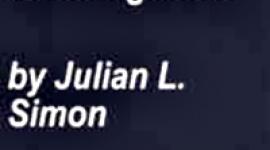Electroconvulsive Therapy (ECT)
 note: I have put this article on the Shocked! ECT web site, rather than a link to the APA site, after many complaints that the APA site is difficult to access (i.e. busy and slow). However, this article is provided by the American Psychiatric Association and is from the APA website.
note: I have put this article on the Shocked! ECT web site, rather than a link to the APA site, after many complaints that the APA site is difficult to access (i.e. busy and slow). However, this article is provided by the American Psychiatric Association and is from the APA website.
Electroconvulsive Therapy, more commonly known as "ECT," is a medical treatment performed only by highly skilled health professionals including doctors and nurses under the direct supervision of a psychiatrist, who is a medical doctor trained in diagnosing and treating mental illnesses. Its effectiveness in treating severe mental illnesses is recognized by the American Psychiatric Association, the American Medical Association, the National Institute of Mental Health and similar organizations in Canada, Great Britain and many other countries.
A course of treatment with ECT usually consists of six to twelve treatments given three times a week for a month or less. The patient is given general anesthesia and a muscle relaxant. When these have taken full effect, the patient's brain is stimulated, using electrodes placed at precise locations on the patient's head, with a brief controlled series of electrical pulses. This stimulus causes a seizure within the brain which lasts for approximately a minute. Because of the muscle relaxants and anesthesia, the patient's body does not convulse and the patient feels no pain. The patient awakens after five to ten minutes, much as he or she would from minor surgery.
How ECT Works
The brain is an organ that functions through complex electrochemical processes, which may be impaired by certain types of mental illnesses. Scientists believe ECT acts by temporarily altering some of these processes.
Indications for Use
Electroconvulsive therapy is generally used with severely depressed patients when other forms of therapy such as medications or psychotherapy have not been effective, cannot be tolerated, or (in life threatening cases) will not help the patient quickly enough. ECT also helps patients who suffer with most forms of mania (a mood disorder which is associated with grandiose, hyperactive, irrational and destructive behavior), some forms of schizophrenia, and a few other mental and neurological disorders. ECT is also useful in treating these mental illnesses in older patients for whom a particular medication may be unadvisable.
Extent of Use
Psychiatrists are very selective in their use of electroconvulsive therapy. According to the National Institute of Mental Health, approximately 33,000 hospitalized Americans received ECT in 1980, the last year for which NIMH has figures. That comes out to only about two tenths of one percent of the 9.4 million who suffer with depression, the four million who suffer with schizophrenia and the more than one million who suffer with mania during any given year. Some patients a minority also undergo ECT as an outpatient procedure.
Effectiveness
Numerous studies since the 1940s have demonstrated ECT's effectiveness. Clinical evidence indicates that for uncomplicated cases of severe major depression, ECT will produce a substantial improvement in at least 80 percent of patients (1). ECT has also been shown to be effective in depressed patients who do not respond to other forms of treatment (2). Medication is usually the treatment of choice for mania, but here too certain patients don't respond. Many of these patients have been successfully treated with ECT (3).
Risks
Any medical procedure entails a certain amount of risk. However ECT is no more dangerous than minor surgery under general anesthesia, and may at times be less dangerous than treatment with antidepressant medications. This is in spite of its frequent use with the elderly and those with coexisting medical illnesses (1,4). A small number of other medical disorders increase the risk associated with ECT, and patients are carefully screened for these conditions before a psychiatrist will recommend them for the treatment.
Side Effects
Immediate side effects from ECT are rare except for headaches, muscle ache or soreness, nausea and confusion, usually occurring during the first few hours following the procedure. Over the course of ECT, it may be more difficult for patients to remember newly learned information, though this difficulty disappears over the days and weeks following completion of the ECT course. Some patients also report a partial loss of memory for events that occurred during the days, weeks, and months preceding ECT. While most of these memories typically return over a period of days to months following ECT, some patients have reported longer lasting problems with recall of these memories. However, other individuals actually report improved memory ability following ECT, because of its ability to remove the amnesia that is sometimes associated with severe depression. The amount and duration of memory problems with ECT vary with the type of ECT that is used and are less a concern with unilateral ECT (where one side of the head is stimulated electrically) than with bilateral ECT.
Myths About Brain Damage
Researchers have found no evidence that ECT damages the brain (5,6). There are medical conditions such as epilepsy that cause spontaneous seizures which, unless prolonged or otherwise complicated, do not harm the brain. ECT artificially stimulates a seizure; but ECT induced seizures occur under much more controlled conditions than those that are "naturally occurring" and are safe. A recent study by Coffey and colleagues (7) found no changes in brain anatomy with ECT, as measured by very sensitive scans of the brain using magnetic resonance imaging (MRI) equipment. Other research has established that the amount of electricity which actually enters the brain, (only a small fraction of what is applied to the scalp) is much lower in intensity and shorter in duration than that which would be necessary to damage brain tissue (5).
Restrictions
The idea of ECT is frightening to many people, thanks in part to its depiction in the film "One Flew Over the Cuckoo's Nest." Some may not know that muscle relaxants and anesthesia make it a safe, practically painless procedure.
Some people who advocate legislative bans against ECT are former psychiatric patients who have undergone the procedure and believe they have been harmed by it and that the treatment is used to punish patients' misbehavior and make them more docile. This is untrue.
It is true that many years ago, when psychiatric knowledge was less advanced, ECT was used for a wide range of psychiatric problems, sometimes even to control troublesome patients. The procedure was frightening for patients because it was then administered without anesthesia or muscle relaxants, and the uncontrolled seizures sometimes broke bones.
Today, the American Psychiatric Association has very strict guidelines for ECT administration. This organization supports use of ECT only to treat severe, disabling mental disorders; never to control behavior.
Patient Rights
No psychiatrist simply "decides" to treat a patient with ECT. Before he or she can administer ECT, he or she must first obtain written consent from the patient or (in most states), if the patient is too ill to make decisions for him or herself, from a court appointed guardian (usually one of the patient's family members).
Under the APA's recommended "informed consent" protocol, permission to administer ECT comes after a careful review of the treatment. This review is not a simple recitation of dry, confusing facts; the psychiatrist explains in clear language what ECT involves, what other treatments might be available, and the benefits and risks these procedures may entail. The patient or family member is informed of when, where, and by whom the treatment will be administered and the number of treatments expected. Questions are encouraged. The person consenting to the procedure is kept informed of progress as the treatment continues, and may withdraw consent at any time.
Costs
The costs for any psychiatric treatment vary widely, depending on the state and the facility administering it. Usually, however, ECT costs between $300 and $800 per treatment, an amount which covers the psychiatrist, anesthetist, and a variety of hospital charges. With eight as the average number of treatments, this means a course of ECT treatment will usually cost between $2,400 and $6,400. The cost of ECT is at least partially reimbursed by most insurance plans offering coverage for mental disorders. In cases where the use of ECT shortens the duration of a hospital stay, its net cost may be substantially less.
Bibliography
1. Weiner RD, Coffey CE: Indications for use of electroconvulsive therapy, in Review of Psychiatry, Vol 7. Edited by Frances AJ, Hales RE. Washington, DC: American Psychiatric Press Inc., pp 45881, 1988
2. Sackheim, HA, Prudic J, Devanand DP: Treatment of medication resistant depression with electroconvulsive therapy, in Review of Psychiatry, Vol. 9. Edited by Tasman A, Goldfinger SM, Kaufman CA, Washington, DC: American Psychiatric Press, Inc., pp 91115, 1990
3. Small JG, Klapper MH, Kellams JJ, Miller MJ, Milstein V, Sharpley PH, Small IF: Electroconvulsive treatment compared with lithium in the management of manic states. Arch Gen Psychiatry 45:72732, 1988
4. Weiner RD, Coffey CE: Electroconvulsive therapy in the medical and neurological patient, in Psychiatric Care of the Medical Patient. Edited by Stoudemire A, Fogel B. New York: Oxford University Press, pp 207224, 1993
5. Weiner RD: Does ECT cause brain damage? Brain Behav Sci 7:153, 1984
6. Meldrum BS: Neuropathological consequences of chemically and electrically induced seizures. Ann NY Acad Sci 462:18693, 1986
7. Coffey CE, Weiner RD, Djang WT, Figiel GS, Soady SAR, Patterson LJ, Holt PD, Spritzer CE, Wilkinson WE: Brain anatomic effects of ECT: A prospective Magnetic resonance imaging study. Archives of General Psychiatry 115:10131021, 1991
8. American Psychiatric Association: The Practice of ECT: Recommendations for Treatment, Training, and Privileging. Washington, DC: American Psychiatric Press Inc., 1990
next: Electroconvulsive Therapy/ECT: Ontario
~ all Shocked! ECT articles
~ depression library articles
~ all articles on depression
APA Reference
Staff, H.
(2007, February 19). Electroconvulsive Therapy (ECT), HealthyPlace. Retrieved
on 2026, January 11 from https://www.healthyplace.com/depression/articles/electroconvulsive-therapy-ect



